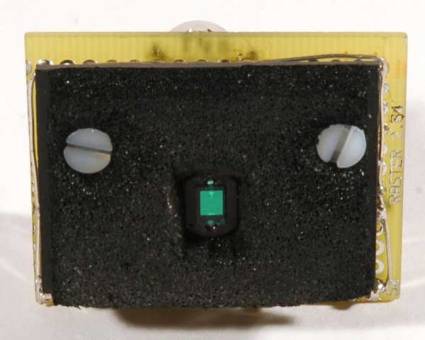The Secret Sauces of THG's LCD Tests
Working Principles
It's a simple matter to convert an intensity of luminosity (or brightness) into an electrical current by using a photodiode. This current can then be converted into a charge by using an amplifier. The trick is to do it quickly. The set-up is as follows:
The photodiode produces a continuous current in proportion to the intensity of the brightness that it receives. This current is converted into a voltage by the amplifier.
The problem with this approach lies in the need to make the conversion from brightness-to-current-to-voltage rapidly. On the amplifier side, there aren't a lot of worries, since the delays that we're aiming for are of the order of tens of milliseconds. But finding a photodiode capable of converting quickly enough is another matter. What's more, you need to understand that the current generated by the photodiode is very weak, and the operational amplifiers themselves aren't perfect: it's even possible that the current that we're trying to measure could be swamped by the negative feedback of the amplifier. So, my first prototype had to be checked thoroughly. Finally, we need to pay attention to the noise constraints imposed by such a system of measurement: it's out of the question, for instance, to use the PC's own power supply. Instead we use a clean laboratory-standard power supply and regulators of +12 V and -12 V on top of that, with really solid insulation to top it all off.
Even after all these precautions, we still have to use shielded coaxial cables to ensure the "cleanness" of the signals measured.
Here, the output voltage is displayed on a digital oscilloscope equipped with a disk drive to record the screen images.
Get Tom's Hardware's best news and in-depth reviews, straight to your inbox.
Current page: Working Principles
Prev Page Latency Measures; Introducing The Test System Next Page The Mechanism

